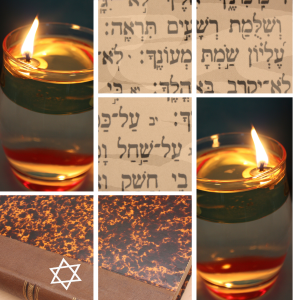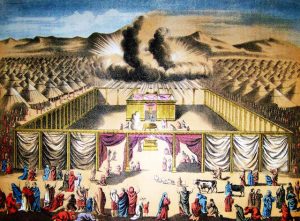“The Daf” literally means “the page”, and is referring to a world-wide movement call the “Daf Hayomi”, or “Page a Day” of the Talmud. A “page” in this case really means two pages, as a “daf” is both folios, or sides, of a page of Talmud.
The Talmud, mainly a commentary to the Mishna, (redacted by Rabbi Yehuda the Prince in around the year 200 C.E.), is the main body of the Oral Law of the Torah. Although the “Oral Tradition” or Oral Law, as its name implies, was originally meant to be passed down by memory and not written down. Rabbi Yehuda deemed it necessary to commit it to writing due to Roman persecution forbidding the study of Torah. This prohibition, leading to the closure of most of the academies of study, put the entire tradition in jeopardy to rely on the memories of the relatively few remaining scholars. He therefore recorded for future generations.
The Mishna was divided into six Orders, or sections dealing with different areas of Jewish Law. Upon completion, the Mishna was reviewed and ratified by all the leading scholars of his generation, ensuring that all were in agreement that the Mishna is indeed the true representation of the Oral Tradition.
The next three centuries were spent reviewing, analyzing and expounding on the Mishna by the leading scholars of our nation, both in Israel and in Babylonia where most Jews dwelled at that time. In Jerusalem, in the fourth century C.E., the first edition of Talmud appeared, called the Jerusalem Talmud. It was written concisely and in pure Aramaic by the scholars of Israel. Another hundred or so years of analysis was spent by the larger body of scholars in Babylonia, leading to a vast and intricate edition of the Talmud, known as the Babylonian Talmud. It was redacted by two leading sages, Rav Ashi and after him Ravina, near the end of the fifth century C.E.
The Babylonian Talmud became the core, central subject of study in Jewish scholarly circles and Yeshivos from then up until today.
The Talmud consists mainly of intricate and complex legal analysis, but also contains many sections of legal decisions, and Aggadic discussions of Jewish philosophy, history and meaning. The Talmud has been described by historians as the “portable homeland of the Jews”. It provides unlimited intellectual stimulation, insight into the deeper side of Judaism as well as the pure joy and ecstasy of learning.
In August of 1923 a monumental step was taken forward in the study of Talmud among the Jewish people. The first “K’nessia Gedolah” or “Great Assembly”, took place in Vienna in the presence of the leading sages of Israel and thousands of leading delegates. At the plenary session a young luminary, the legendary Rabbi Meir Shapira, spearheaded a worldwide movement called “Daf Yomi”, that Jews around the world would engage in the daily study the same Daf of Talmud. He argued that the best way to unify Jews around the world is for them to be studying the same section of Torah. A Jew from Pinsk visiting South America could find Jews to discuss the same page of Talmud he, himself was learning. (In his words, ‘the Jews from Minsk who bumps into the Jew from Pinsk at the train station will discuss that day’s page’). Jewish unity as well as Torah study among the Jews would be increased greatly. In addition, many remote areas of Talmud not usually studied except by the greatest schoars would thereby become familiar to the rank-and-file Jews, raising the scholarship of the entire Jewish nation. Rabbi Shapira received a standing ovation by the 6000 delegates for his idea and the approbation of all the sages in attendance and Daf Yomi was born.
Today tens of thousands of Jews study the Daf daily around the world; in classes in synagogues, with study partners by phone, by recording, “there’s an app for that!”; classes even take place daily on the subways of New York! Every 7 ½ years a great worldwide celebration takes place upon the completion of the entire Talmud by Klal Yisrael, having studied all its 2947 (double-sided) pages. This celebration is called the “Siyum Hashas”, or completion of the six orders, and has had tens of thousands in attendance in New York and worldwide.
This is the holy brotherhood your cousin is a member of, those special Jews who make a commitment to study daily for 7 ½ years, rain or shine, tired or awake. You should be very proud of him!!
Sincerely,
Rabbi Yerachmiel Fried

